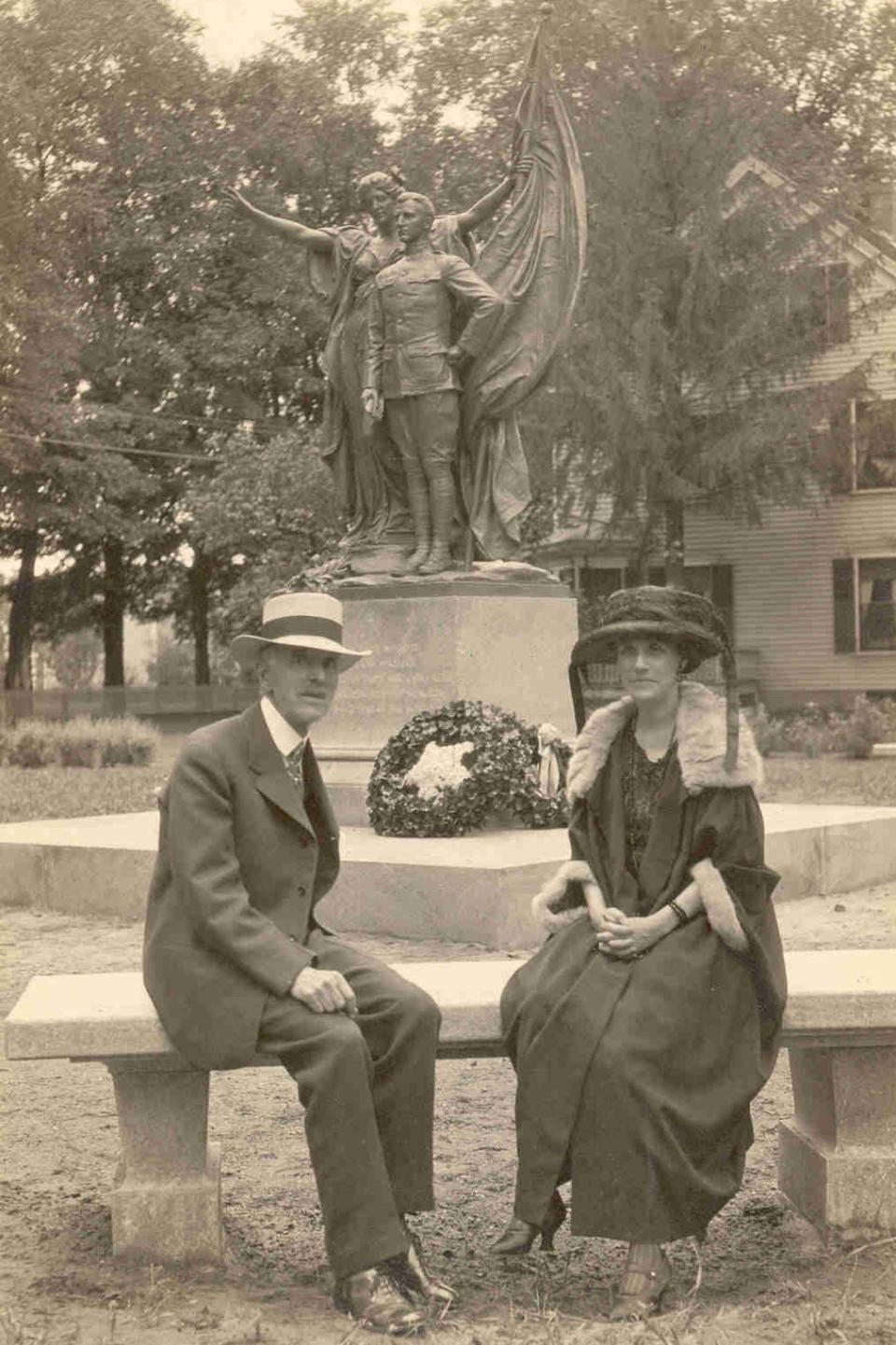Historically Speaking: A look back at Exeter in 1922
- Oops!Something went wrong.Please try again later.
- Oops!Something went wrong.Please try again later.
1922 began icy and cold. “That walking early yesterday morning was dangerous,” reported the Exeter News-Letter,“is attested by the fact that three employees of the Exeter Manufacturing Company had to be taken to the hospital to be treated for injuries received in falls.”
The previous year, it had been decided to create safe play areas for the town’s children. The decision was not without controversy, and Chester Smith, chairman of the Exeter Summer Playground Committee, was still trying to sell the plan to the townsfolk. “I have tried to give you the ‘why’ of the Summer playground problem. Exeter today offers our hundreds of boys and girls nothing more or less at vacation time than the untrammeled freedom of the streets and vacant lots. Are we meeting our responsibilities to the youth of our town?” In another letter to the News-Letter, he urged, “I have heard but one objection thus far, and that particular objector feels that because the children of past generations got along without playgrounds the children of this day will do very without such ‘newfangled-ideas.’” He reminded readers that most people wouldn’t care to give up the new innovations – automobiles, electric trains, electric lights, and even electric motion picture machines. Why should our newly understood knowledge about health and physical fitness stagnate in the past?

The usual arguments ensued. A letter writer named “S” said, “a children’s playground is not a new idea for Exeter, but has been tried and found to be an expensive and worse than useless fad.” Author Henry Shute, calling himself part of the “doubting Thomases,” sarcastically replied, “Of course we must admit that a complete knowledge of folk dancing and skill in basketry are accomplishments of tremendous importance, the lack of which has been a very serious handicap to the great men of the present day.” Nevertheless, the playgrounds had already been authorized and by August the two at the Plains and Court Street were put into commission.
In February, word reached the town that Exeter native, Elizabeth Gardner Bouguereau had died at the age of 85 at her home in France. Bouguereau was born in Exeter in 1837 but left in 1862 for Paris to study painting. As a woman, the studios were largely closed to her. She later told Lida Rose McCabe of the New York Times, “When I found every Paris atelier (studio) door closed to me, I resolved to follow Rosa Bonheur’s example in a similar emergency. My hair was short. A fever had clipped it close before I quit America. I applied to the Paris Police Department for permission to wear boy’s clothes. It was readily granted. The great drawing school of Paris in the sixties and for long after was the Government Gobelin Tapestry Factory. No woman had ever crossed its threshold as a student nor had one ever applied for admission to its classes. Undaunted, I knocked at the door and was admitted to the Gobelin School. Not a professor objected.” She went on to exhibit her work at the Paris Salon and was the first woman awarded a medal. During the Franco-Prussian war, she was able to send information to American journalists. As most of the writers were men, they were liable to conscription if they were found on the streets. McCabe wrote, “Everywhere she picked up vital copy for her compatriots of the pen, while Boston papers were enlivened by her own graphic accounts of the siege.” Her letters to the Exeter News-Letterduring the first World War provided a first-hand account of the fighting and conditions. Her style of painting was out of favor at the time of her death, but McCabe was generous in her praise. “Elizabeth Gardner Bouguereau literally opened Paris ateliers to the women of the world; indirectly, she created the first woman art school in the world’s art centre. Not as a painter but as a pathfinder is her place assured in the history of the fine arts.”
By far, the grandest Exeter event of 1922 was the dedication of the war memorial on Front Street. Proposed several years earlier, it was decided to ask native-son, Daniel Chester French to create the statue. French was born in Exeter in 1850 and became famous with his sculptures of Concord’s “Minuteman.” He created sculptures for the World Columbian Exposition in Chicago in 1894. On Memorial Day in 1922, French was on hand in Washington, D.C. for the dedication of his most famous work, the seated Lincoln in the Lincoln Memorial. During the final construction of the Lincoln, French had been approached by the town of Exeter to complete a small memorial statue. For his efforts, he was willing to accept a mere $20,000 – far below his usual fee – as an homage to his hometown. However, as he was expected in Washington on Memorial Day, the memorial statue in Exeter would have to be dedicated on July 4th.
“Exeter Fittingly Dedicates Beautiful Memorial To Her Sons And Daughters Of The World War,” ran the headline. The News-Lettercalled it, “a masterpiece of a filial son, Daniel Chester French, foremost among living sculptors, it constitutes a priceless possession, whose fitness and surpassing beauty will more and more appeal.” Indeed, it has. One hundred years later, we can still find beauty in two brilliant works found in town – French’s statue in Gale Park and Bouguereau’s painting, “Crossing the Brook” at the Exeter Historical Society.
Barbara Rimkunas is the curator of the Exeter Historical Society. Support the Exeter Historical Society by becoming a member. Join online at www.exeterhistory.org.
This article originally appeared on Portsmouth Herald: Historically Speaking: A look back at Exeter in 1922

